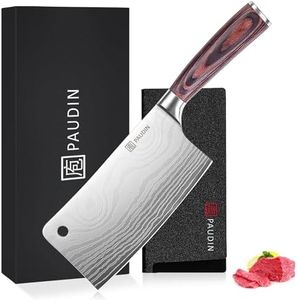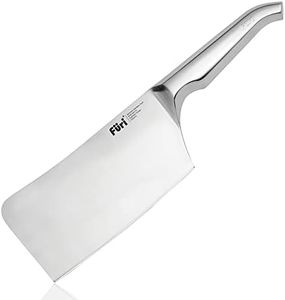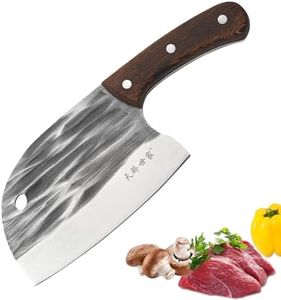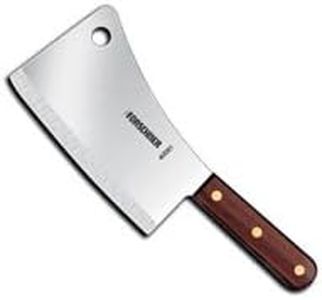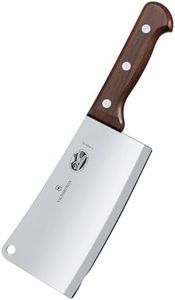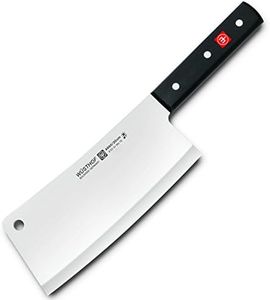We Use CookiesWe use cookies to enhance the security, performance,
functionality and for analytical and promotional activities. By continuing to browse this site you
are agreeing to our privacy policy
10 Best Cleaver Knives
From leading brands and best sellers available on the web.Buying Guide for the Best Cleaver Knives
Choosing a cleaver knife is about understanding your kitchen needs and the tasks you'll be performing most often. Cleaver knives are designed for heavy-duty work such as chopping through meat, bones, and dense vegetables. Selecting the right cleaver involves knowing what you'll use it for, how comfortable it feels in your hand, and how easy it is to maintain. Think about the foods you commonly prepare and the strength you feel comfortable applying while chopping.Blade MaterialBlade material determines how well your cleaver holds its edge, resists rust, and how easy it is to sharpen. Common materials include stainless steel, high-carbon steel, and sometimes composite steels. Stainless steel resists rust and is easy to maintain, while high-carbon steel can be sharper and hold an edge longer but may need more care to avoid rusting. If you want less maintenance and more rust resistance, stainless is preferable. If you prioritize sharpness for heavy chopping, high-carbon steel is a solid choice, but expect some extra care.
Blade ThicknessThe thickness of the blade affects how well the cleaver cuts through tough foods. Thicker blades (usually above 4mm) are heavy and strong, ideal for splitting bones and hard ingredients. Thinner blades (2-3mm) are lighter and more suited for slicing meat and vegetables without bones. When deciding, think about whether you'll mostly cut bone-in meats or just need a general-purpose cleaver for vegetables and boneless cuts.
Blade SizeBlade size, often measured in inches or centimeters, influences what you can cut and how easily you can maneuver the knife. Larger blades (7 inches or more) are handy for big jobs like chopping bones, while smaller blades (around 6 inches) offer more control for precise slicing and dicing. Your typical cooking tasks and comfort with knife size should guide your choice.
Handle Design and MaterialHandle design impacts how comfortable and secure the cleaver feels during use. Handles can be made of wood, plastic, or composite materials. Wooden handles feel traditional and comfortable but may need more care. Plastic and composites are durable and often more resistant to moisture. The shape should fit your hand well—if you have smaller hands, seek out slimmer, contoured handles for better grip and control.
Weight and BalanceThe overall weight and how the cleaver is balanced affect how easy it is to handle and how much effort is needed to chop. Heavier cleavers do more of the work for you when splitting tougher ingredients, while lighter models are less tiring if you'll use the knife for a long time. Balance is important too, making sure the knife doesn't feel awkward or tip-heavy—this is mostly personal, so consider what feels comfortable for your strength and cooking habits.
Edge AngleEdge angle refers to how sharp the cutting edge is. A steeper edge (smaller angle, like 15-18°) will be sharper and better for slicing, but may chip more easily with bone. A wider edge (20-25° or more) is tougher and holds up better when cutting harder ingredients like bones. Choose the angle that matches your cooking: sharper for vegetables and boneless meats, wider for heavy chopping tasks.
